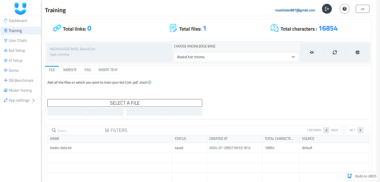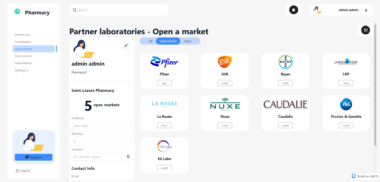Database Explorer MCP Tool
A powerful Model Context Protocol (MCP) tool for exploring and managing different types of databases including PostgreSQL, MySQL, and Firestore.
Features
Multiple Database Support
- PostgreSQL
- MySQL
- Firestore
Database Operations
- Connect to databases
- List tables
- View triggers
- List functions
- Execute SQL queries (PostgreSQL and MySQL)
- Export table schemas
- Export table data
Integration with Cursor
Before adding the tool to Cursor, you need to build the project:
- Clone the repository
- Install dependencies:
npm install - Build the project:
npm run build
To add the tool to Cursor:
- Open Cursor settings
- Navigate to “Model Context Protocol (MCP)” section
- Click “Add New Tool”
- Fill in the following details:
Note: Replace{ "name": "database-explorer", "command": "node /path/to/project/dist/index.js", "description": "Database Explorer MCP Tool" }/path/to/projectwith the actual path to your project directory. - Save the settings
- Restart Cursor
Using the Tool:
After setup, you can connect to your database using one of these commands:
- For PostgreSQL: Use
!pgwith connection details - For MySQL: Use
!mysqlwith connection details - For Firestore: Use
!firestorewith connection details
- For PostgreSQL: Use
Once connected, you can use various database operations:
!tablesto list all tables!triggersto view triggers!functionsto list functions!queryto execute SQL queries!export-dbto export table schemas!export-datato export table data
See the Commands section below for detailed usage examples.
Commands
Connection Commands
!pg- Connect to PostgreSQL database{ "connection": { "host": "hostname", "port": 5432, "database": "dbname", "user": "username", "password": "password" } }!mysql- Connect to MySQL database{ "connection": { "host": "hostname", "port": 3306, "database": "dbname", "user": "username", "password": "password" } }!firestore- Connect to Firestore database{ "connection": { "projectId": "your-project-id", "keyFilename": "path/to/keyfile.json" } }
Database Operation Commands
!tables- List all tables in the connected database!triggers- List all triggers in the connected database!functions- List all functions in the connected database!query- Execute SQL query (PostgreSQL and MySQL only){ "query": "SELECT * FROM table_name" }!export-db- Export table schema{ "table": "table_name" }!export-data- Export table data as INSERT statements{ "table": "table_name" }
Requirements
- Node.js
- Required database drivers:
pgfor PostgreSQLmysql2for MySQL@google-cloud/firestorefor Firestore
Usage
- Make sure you have the necessary database credentials
- Connect to your database using the appropriate connection command
- Use the available commands to explore and manage your database
Error Handling
- The tool includes comprehensive error handling for:
- Connection failures
- Query execution errors
- Schema and data export issues
- Invalid database operations
Notes
- Firestore support is limited to basic operations due to its NoSQL nature
- SQL operations are only available for PostgreSQL and MySQL
Database Explorer
Project Details
- wirdes/db-mcp-tool
- MIT License
- Last Updated: 4/14/2025
Categories
Recomended MCP Servers
Fused MCP Agents: Setting up MCP Servers for Data Scientists
Google Search Console Insights with Claude AI for SEOs
Connect to an EHR and make clinical data available via MCP
Monorepo providing 1) OpenAPI to MCP Tool generator 2) Exposing all of Twilio's API as MCP Tools
Hacker news MCP server
A MCP server for the stock market data API, Alphavantage API.
A Model Context Protocol server for Scrapybara

An intelligent MCP server that provides tools for collecting and documenting code from directories

council of models for decision


A Model Context Protocol server for Chess.com's Published Data API. This provides access to Chess.com player data, game...
 From vibe coding to vibe deployment. UBOS MCP turns ideas into infra with one message.
From vibe coding to vibe deployment. UBOS MCP turns ideas into infra with one message.






